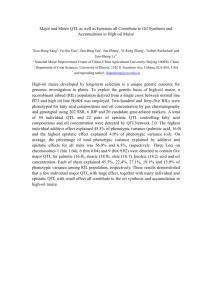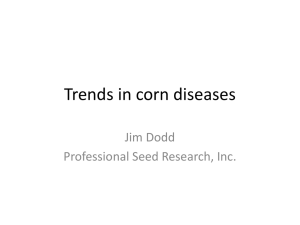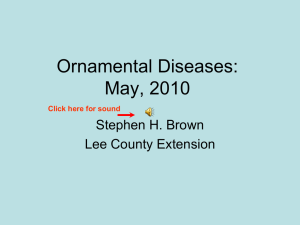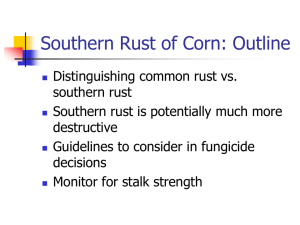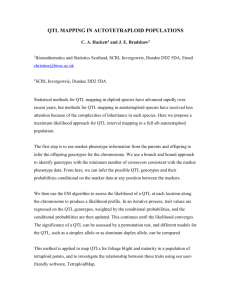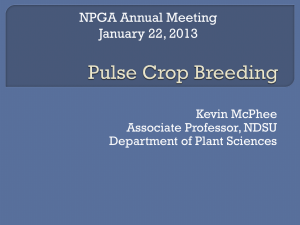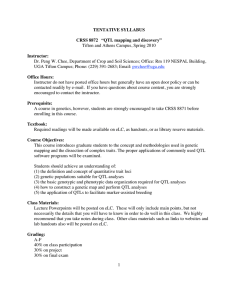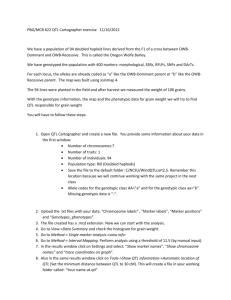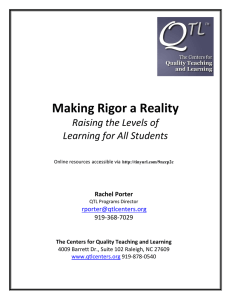Recurrent Selection Mapping in two Maize populations indicates
advertisement
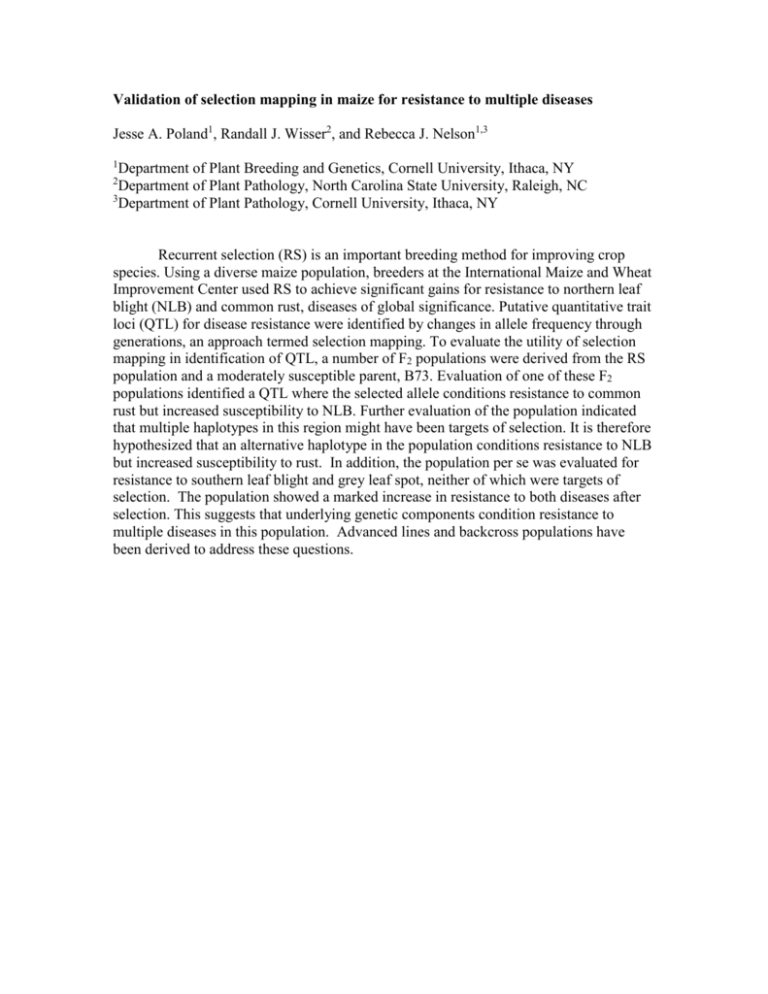
Validation of selection mapping in maize for resistance to multiple diseases Jesse A. Poland1, Randall J. Wisser2, and Rebecca J. Nelson1,3 1 Department of Plant Breeding and Genetics, Cornell University, Ithaca, NY Department of Plant Pathology, North Carolina State University, Raleigh, NC 3 Department of Plant Pathology, Cornell University, Ithaca, NY 2 Recurrent selection (RS) is an important breeding method for improving crop species. Using a diverse maize population, breeders at the International Maize and Wheat Improvement Center used RS to achieve significant gains for resistance to northern leaf blight (NLB) and common rust, diseases of global significance. Putative quantitative trait loci (QTL) for disease resistance were identified by changes in allele frequency through generations, an approach termed selection mapping. To evaluate the utility of selection mapping in identification of QTL, a number of F2 populations were derived from the RS population and a moderately susceptible parent, B73. Evaluation of one of these F2 populations identified a QTL where the selected allele conditions resistance to common rust but increased susceptibility to NLB. Further evaluation of the population indicated that multiple haplotypes in this region might have been targets of selection. It is therefore hypothesized that an alternative haplotype in the population conditions resistance to NLB but increased susceptibility to rust. In addition, the population per se was evaluated for resistance to southern leaf blight and grey leaf spot, neither of which were targets of selection. The population showed a marked increase in resistance to both diseases after selection. This suggests that underlying genetic components condition resistance to multiple diseases in this population. Advanced lines and backcross populations have been derived to address these questions.
